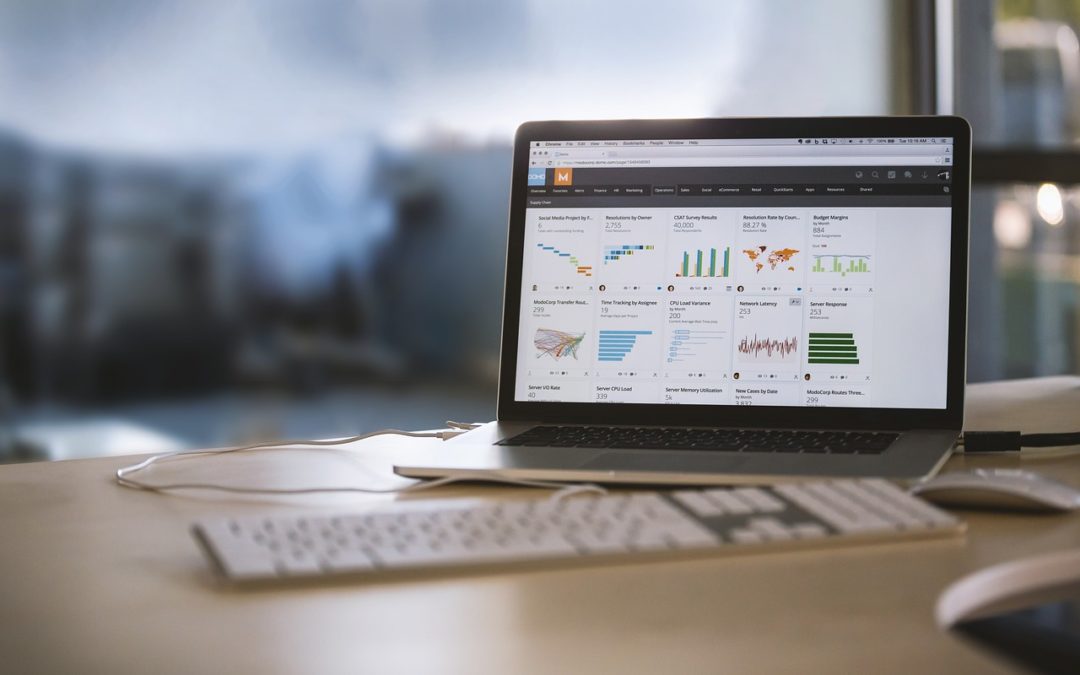
Not analyzing the metrics of a website, or not acting accordingly, is more or less like walking in the dark hoping to somehow reach the destination: both are possible but highly unlikely.
But what are the most important metrics to consider on a website? Some of you have probably heard about it hundreds of times because they are present in every check list created by those who analyze the performance of a website. However, there are many metrics in addition to the bounce rate and the positioning of keywords on Google, perhaps less known and less discussed, but still very important.
Today we will talk about some of these metrics that can make the difference between the success and failure of a website …
1) Number of pages receiving visits from search engines
When you notice significant changes in the amount of traffic on the website, it does not always depend on changes regarding the keywords or the best ranking of existing pages. One of the less obvious reasons is the change in the number of website pages indexed by Google. You may notice a significant increase or decrease in traffic without doing anything and without experiencing significant changes in keywords, simply because Google is doing a deeper scan of your website.
How is this useful to you? You have the opportunity to examine the website’s performance in more detail. If you add new content and these pages are not indexed, then something is wrong. If Google does more research on your site, and you can link it to changes you’ve made recently, then take note why these actions have had a positive impact. For example, if you change the navigation structure and notice that more pages begin to receive visits from search engines, you can mark it as a useful practice and continue experimenting in this direction.
2) Branded and not branded traffic
The branded keywords are those directly related to your company or your brand while the not branded keywords are broader search terms that do not include the company brand and are more related to the industry as a whole.
Analyzing the amount of both types of traffic and the way they behave towards each other helps you define your SEO strategy and decide what applies best to your business.
On the one hand, branded traffic usually works best when it comes to conversions – but this is mainly due to the fact that when someone searches for a branded keyword he already knows the brand and is probably looking for a particular item. In other words, the greater the branded traffic, the greater the brand awareness.
On the other hand, it is from the not branded traffic that new users, visitors and potential customers who discover the brand for the first time are reached.
If your branded campaigns not work better than branded ones, it means you should focus more on a brand awareness strategy.
3) Scanning errors
Among other things, Google Search Console also shows you crawl errors, referring to the site, but the report can be customized if desired. Needless to say, any scans you notice should be followed immediately, because a crawl error means that some parts of your website are not functioning as they should and do not carry traffic to the site.
Site errors must be addressed first of all because they affect the performance of the entire website. DNS and server are among the most important: the first means that GoogleBot does not connect to your site at all and the last one that your server takes too long to respond to.
Using the View as Google tool (Fetch with Google) and following the instructions you can identify and solve some of these problems.
4) The final conversions
Conversion is probably one of the most discussed metrics, so you’re probably wondering why we included it in this list where we talk about the lesser-known metrics?
It’s very simple: we’re talking about final conversions, achieving the final goal you set up for your business – for an online retailer, making a sale, for a SaaS agency selling a subscription and so on – in other words, you should measure the concrete results, something that means putting money in your pocket.
Free subscriptions, for example, are not conversions; many people sign up with the intention to read something from time to time when they have time, to finish then canceling the registration a year and a half later without ever having interacted with the website. Only final conversions can show you how well your strategy is working and if you should change something.
5) Backlink
Backlinks play an important role in SEO, but their quantity no longer matters – quality is much more important. A single backlink from an authoritative website is worth more than a hundred backlinks from non-authoritative pages; and in these days Google could actually penalize you if you tend to rely on many low quality backlinks.
Therefore, it is the quality of your backlink profile that you should pay more attention to, not the total sum of all backlinks.
How to get more high quality backlinks? Create valuable content. Spend time on guest blogging, get in touch with influencers in your industry. Avoid low-cost links.
There is a lot more in SEO than measuring only the most obvious metrics and taking mechanical actions to improve them. The SEO strategy is to consider the big picture, using lesser-known metrics to understand the significance of the changes and to take quick action based on the results.


